Product Led Growth vs Sales Led Growth: What to Choose?
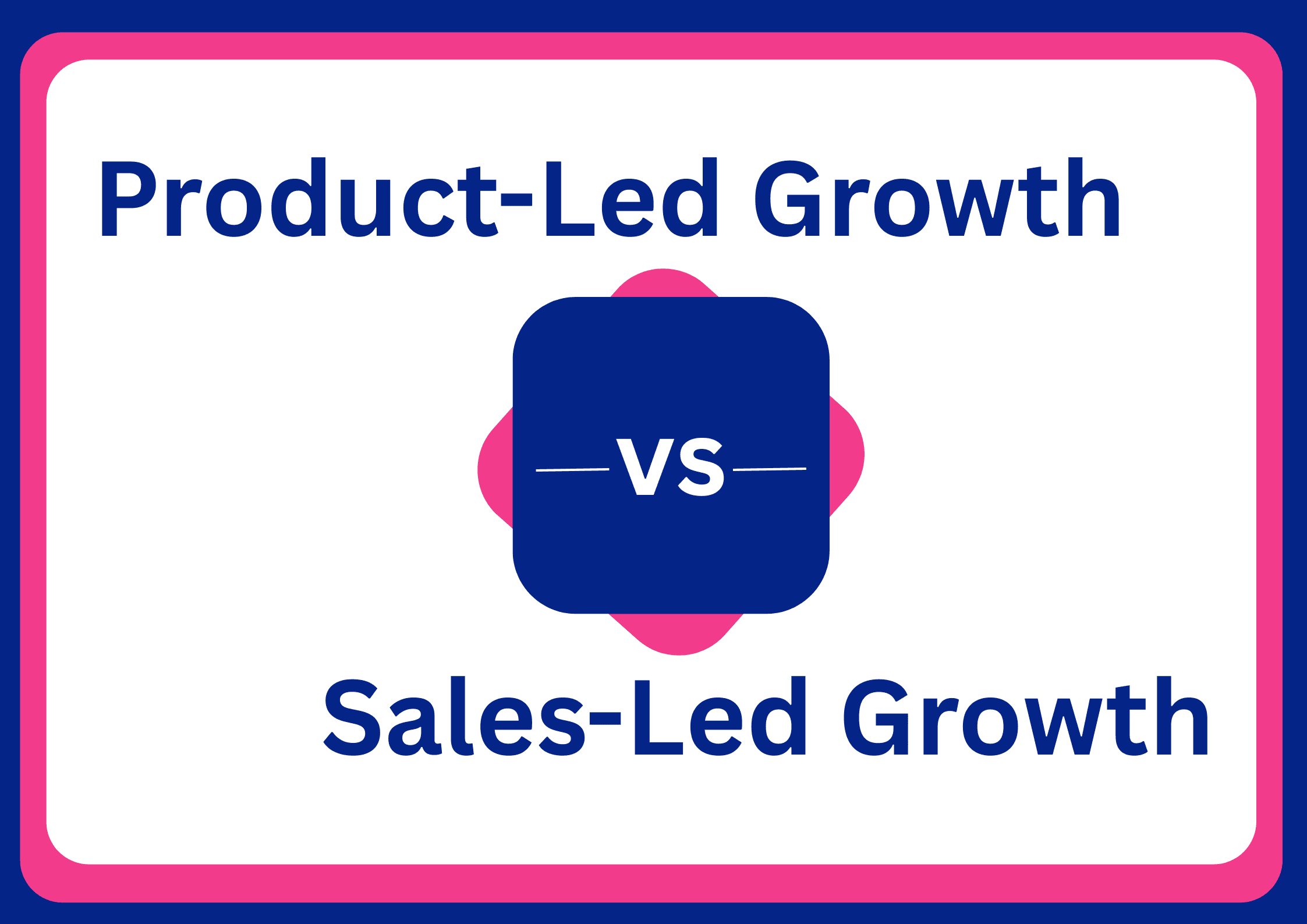
Add Table of Contents
TL;DR
|
Choosing the right go-to-market strategy can feel like walking a tightrope. On one side, you’re told that your product should sell itself. On the other hand, sales teams promise high-touch relationships that drive revenue. So, which path actually delivers sustainable growth?
The truth is, both product-led growth and sales-led growth have their strengths, but picking the wrong one for your stage, product, or market can slow everything down. You might invest in features no one uses, or burn cash chasing leads that never convert. It’s a strategic dilemma most SaaS and tech leaders face, especially when trying to scale.
In this blog, we’ll break down both approaches, highlight when to use each, and help you align your growth strategy with your product, audience, and goals.
What is Product Led Growth (PLG)?
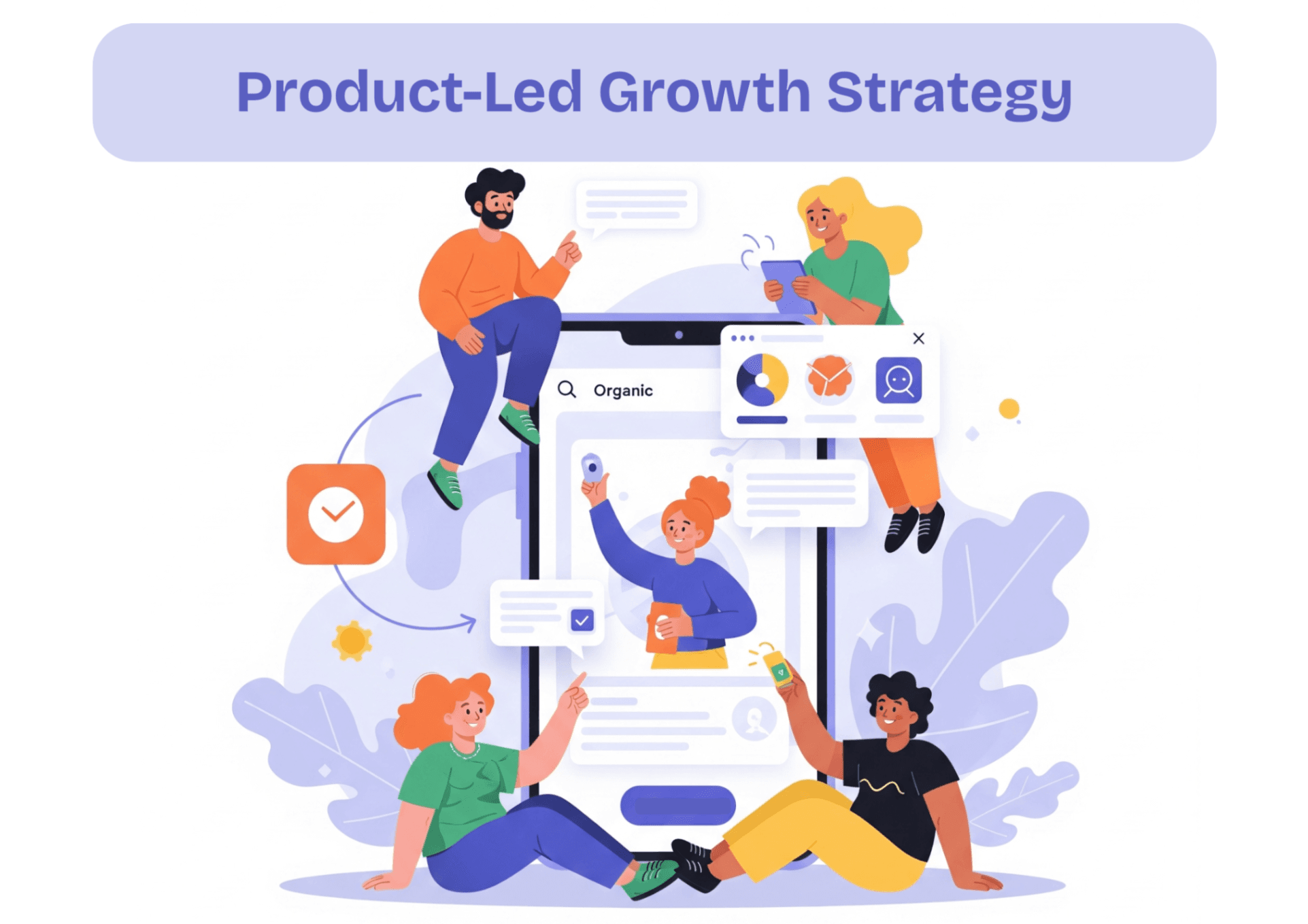
Product led growth (PLG) is a business strategy where the product itself drives user acquisition, retention, and expansion. Instead of relying heavily on sales teams, PLG focuses on delivering an exceptional user experience that encourages organic growth through customer satisfaction and word-of-mouth.
What Are the Key Drivers Behind a PLG Approach?
Product-led growth empowers users to experience value before ever speaking to sales. Here’s what sets it apart:
Self-Serve Onboarding: Users can explore the product at their own pace without needing a sales rep. A smooth, intuitive onboarding experience helps them see value quickly.
Freemium or Free Trial Models: According to Gainsight, 43% PLG companies often offer free access to the product, either with limited features or for a limited time, to reduce friction and encourage signups.
Product‑Led Content: Tutorials, in‑app guides, and active user communities help educate and support users, making the product itself the main driver of engagement, retention, and growth.
It’s all about letting the product do the talking.
What Are the Core Benefits and Challenges of PLG for SaaS Companies?
Product-led growth offers clear advantages, but it also brings specific challenges. It’s efficient, scalable, and data-driven, but not ideal for every product or market. Here’s a direct look at what works and what doesn’t when it comes to PLG:
Benefits of PLG | Challenges of PLG |
|---|---|
Lower customer acquisition costs (CAC) | Requires a highly intuitive, easy-to-use product |
Scales quickly with minimal sales effort | Difficult to monetize complex, high-touch products |
Faster feedback loops for product teams | Freemium users may never convert to paid plans |
Better product-market fit via real usage | Less control over the sales process |
Builds trust by letting users try before buying | Can be resource-intensive to maintain onboarding and support flows |
While PLG can accelerate growth and lower costs, it’s not a one-size-fits-all solution. To understand its real impact, let’s look at companies that have successfully built their growth engine around the product itself.
PLG Success Stories: Which Real-World Examples Prove It Works?
Some of today’s most successful tech companies owe their explosive growth to a product-led approach. These businesses let users experience value upfront, turning engagement into conversions, without relying heavily on traditional sales.
Read on to see how real-world brands have used PLG to scale faster, lower acquisition costs, and build loyal user bases.
1. Slack
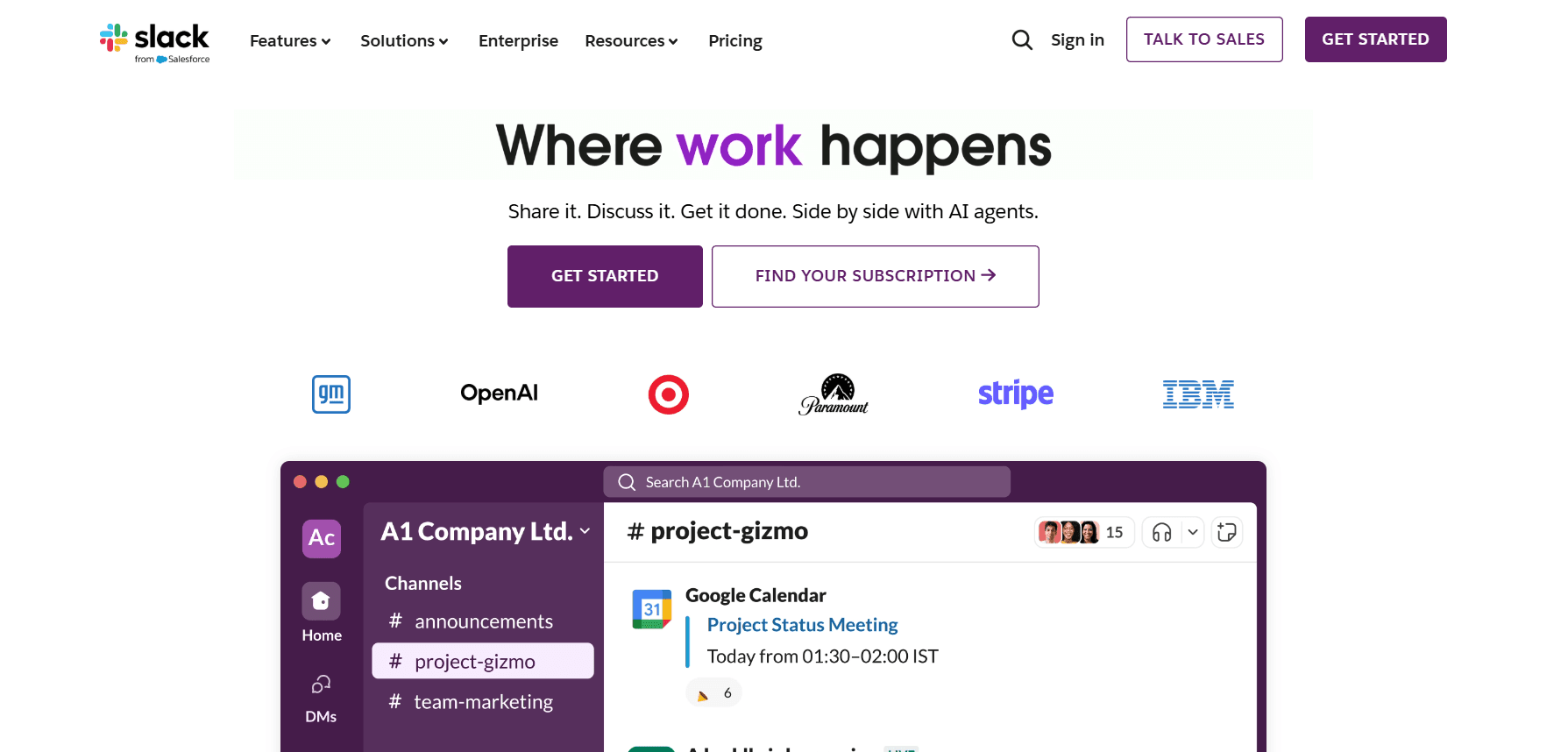
Slack has revolutionized customer engagement by positioning its SaaS product at the helm of user journeys. A free trial allows customers to explore the platform’s features, while its user-friendly design enhances customer experience.
The platform drives immersive customer engagement by highlighting instant communication and collaboration tools. Slack enables users to evaluate its product organically, creating a clear path to conversion through its PLG approach.
This strategy ensures Slack retains a competitive edge, acquiring and nurturing loyal users who stem from a data-driven focus on customer needs.
2. Calendly
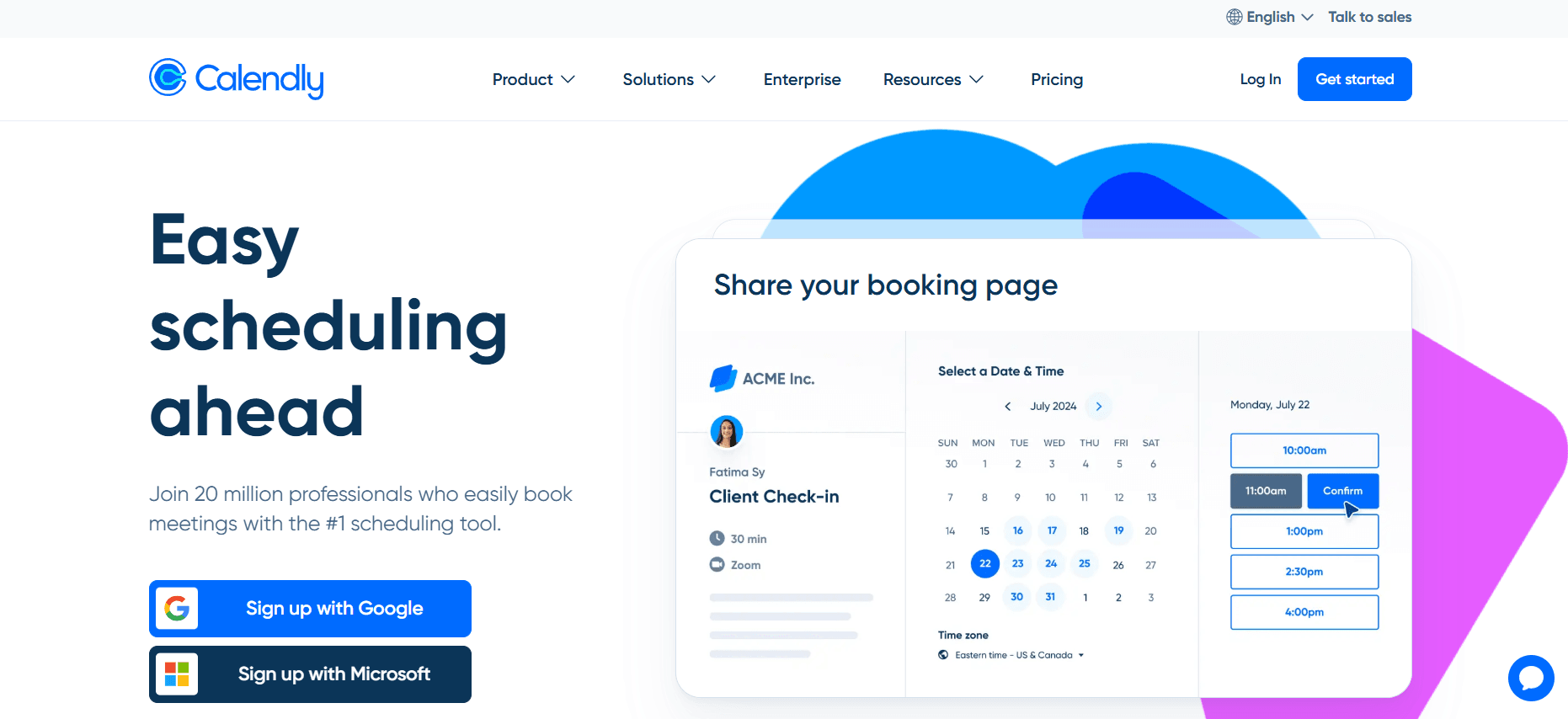
Calendly illustrates effective customer acquisition through a freemium model that appeals to productivity-focused users. By offering robust features around scheduling and time management in its free tier, Calendly attracts SaaS users effortlessly.
Its product-driven growth strategy capitalizes on self-service onboarding, eliminating barriers for new users. Calendly’s product teams continuously refine usability based on feedback, maximizing conversion rates from free to premium plans.
This product-first ethos not only drives organic growth but positions Calendly as a leader in simplifying appointment booking.
What is Sales Led Growth (SLG)?
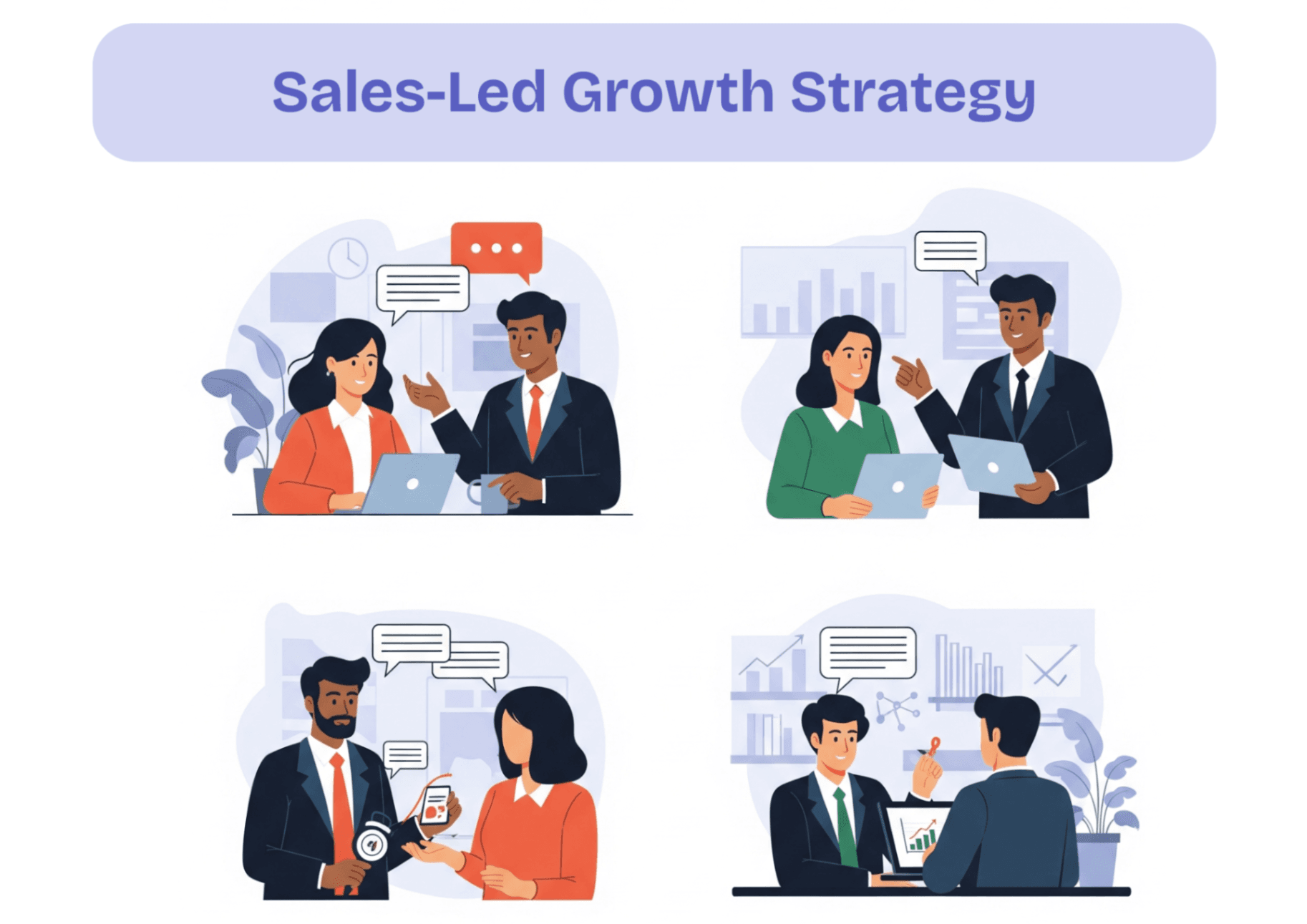
Sales led growth (SLG) focuses on using direct sales strategies to drive revenue, often emphasizing personal relationships and tailored solutions. This approach heavily relies on sales teams to identify prospects and nurture leads, making it essential for businesses targeting high-value clients or complex sales cycles.
What Are the Main Characteristics of Sales Led Growth?
Sales-led growth relies on human interaction to move prospects through the funnel, making it ideal for complex or high-ticket products. Here’s what defines this approach:
Dedicated Sales Teams: Trained reps handle lead qualification, demos, follow-ups, and closing deals.
Personalized Demos & Consultations: Sales teams tailor presentations to the prospect’s specific use case, pain points, and business goals.
Relationship Management & Negotiation: Reps build trust over time, manage stakeholder concerns, and navigate pricing or contract discussions.
This model is built on conversations, not clicks.
What Are the Advantages and Common Pitfalls of the Sales Led Approach?
The sales-led growth model works best when deals require a human touch. It gives companies more control over the buyer journey, but it also comes with higher costs and longer cycles. Before investing in this approach, it’s important to weigh both sides.
Advantages of Sales-Led Growth | Common Pitfalls of Sales-Led Growth |
|---|---|
Works well for high-ticket or complex products | Higher customer acquisition costs (CAC) |
Builds strong, trust-based customer relationships | Slower to scale compared to product-led models |
Allows for customization and tailored solutions | Lengthy sales cycles with more touchpoints |
Greater control over the sales process | Heavy reliance on the sales team's performance |
Helps navigate enterprise-level decision-making | Limited ability to scale through automation |
Now that we’ve covered the basics of the sales-led growth strategy, let’s explore how some well-known brands have successfully used SLG to build and close high-value pipelines.
How Have Top Businesses Scaled With the Power of SLG?
Many enterprise software companies rely on direct outreach, personalized demos, and long-term relationships to win big deals. Their approach shows how SLG can drive predictable growth, especially in high-stakes, B2B environments.
1. Salesforce
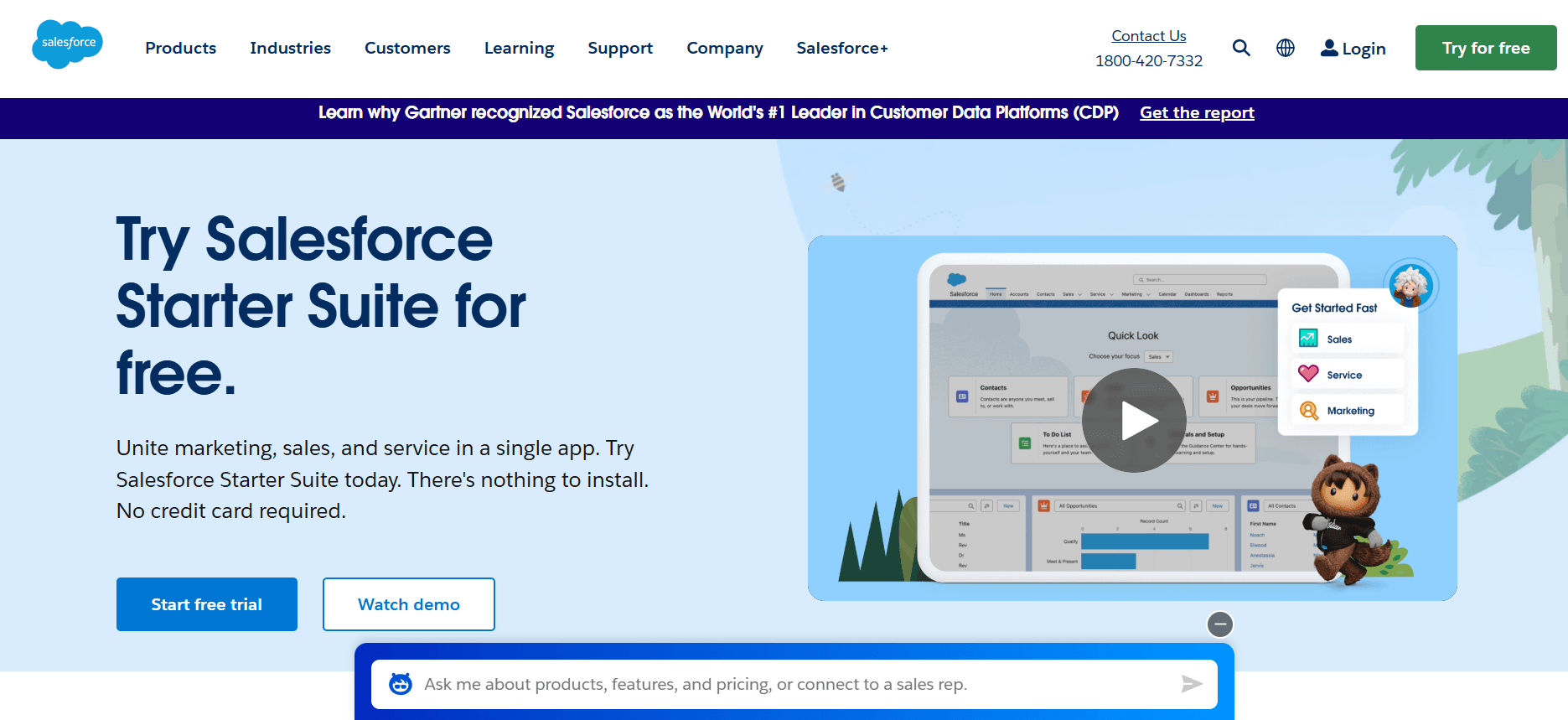
Salesforce is a quintessential example of an SLG powerhouse. Its sales strategy consists of identifying needs via personalized discussions and delivering solutions customized to fit business challenges.
Through a proactive sales team, Salesforce nurtures customer relationships, showcasing how its CRM tools can enhance lead management and overall business growth. Enterprise clients receive demos and tailored contracts for specific objectives.
This SLG model drives Salesforce’s profitability, proving that aligning sales expertise with customer goals guarantees better retention and deal sizes.
2. Workday
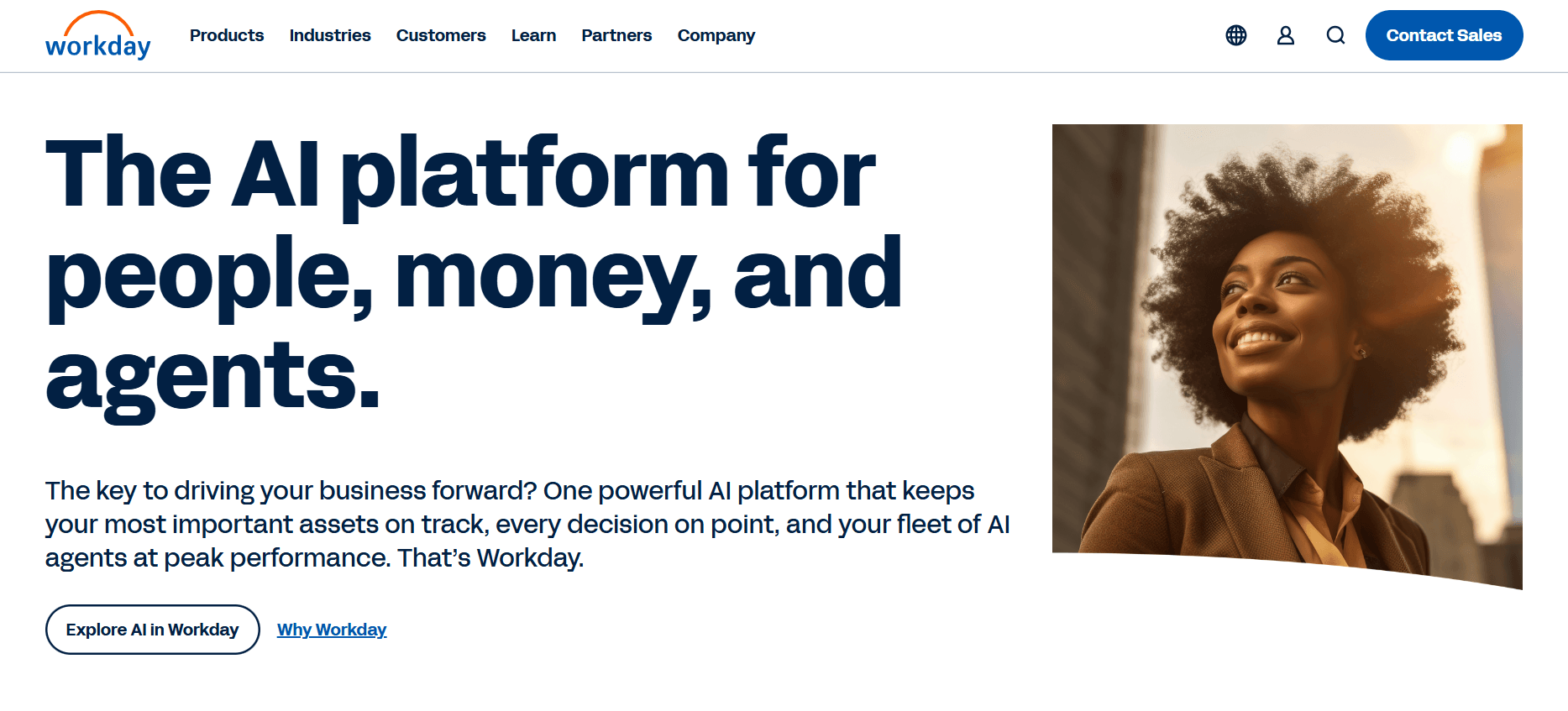
Workday exemplifies the art of enterprise sales by targeting large organizations. Its sales function utilizes in-depth consultations to understand customer needs and deliver tailored financial or HR solutions.
The company crafts a pivotal client experience by guiding businesses through the complexities of implementation, thereby cementing trust. Workday’s customer service-centric approach is crucial to building long-term relationships with enterprise accounts.
By leveraging SLG strategies, Workday remains a top name in SaaS solutions.
Product-Led Growth vs Sales-Led Growth: What Are the Key Differences?
Understanding the core differences between Product-Led Growth (PLG) and Sales-Led Growth (SLG) is essential to choosing the right go-to-market strategy for your business. While both aim to drive customer acquisition and revenue, their methods differ significantly across multiple areas. Let’s break down how each model operates and where they diverge.
1. How Do PLG and SLG Handle Customer Acquisition and Onboarding?
Both PLG and SLG maintain unique approaches to customer acquisition and customer onboarding.
Product-Led Growth (PLG) | Sales-Led Growth (SLG) |
|---|---|
Self-serve processes powered by the product | Guided checkpoints via sales representatives |
Users activate and onboard independently via intuitive flows | Demos and contract discussions |
Shorter time-to-value for onboarding | Longer cycles for enterprise-level onboarding |
The difference in their buying processes reflects distinct accessibility paths for individuals versus large clients, aligning with their individual growth goals.
2. How Do PLG and SLG Differ in Revenue Models and Monetization?
PLG and SLG take different routes when it comes to pricing and revenue generation.
Product-Led Growth (PLG) | Sales-Led Growth (SLG) |
|---|---|
Freemium or free trial to attract users | Custom pricing based on client needs |
Scales through self-serve upgrades | Revenue is driven by negotiated contracts |
Transparent, usage-based pricing models | Tiered or bundled plans for enterprise clients |
Each model aligns with the type of customer it targets. PLG focuses on accessibility and scalability, while SLG emphasizes personalization and long-term value.
3. How Do PLG and SLG Shape Customer Relationships and Retention?
PLG and SLG foster customer relationships in different ways, each with its own strengths and limitations.
Product-Led Growth (PLG) | Sales-Led Growth (SLG) |
|---|---|
Focuses on product experience and usability | Emphasizes personalized sales interactions |
Encourages self-driven engagement and loyalty | Builds a strong initial commitment through relationship building |
Retention is driven by continuous product value | Retention depends on post-sale support and follow-up |
Each model supports retention differently. PLG through ongoing product satisfaction, and SLG through human connection and service. The right choice depends on how your business defines and supports long-term customer success.
4. How Do PLG and SLG Differ in First Product Interaction?
PLG and SLG offer distinctly different first-touch experiences, shaping how users initially perceive value from the product.
Product-Led Growth (PLG) | Sales-Led Growth (SLG) |
|---|---|
Users explore the product instantly | Interaction starts with a sales conversation or demo |
Product experience is the entry point | Product access is granted later in the cycle |
Users form their own opinions based on hands-on experience | Perception is shaped through sales messaging and guidance |
This fundamental difference impacts how quickly value is realized and who drives the discovery: the user or the sales team.
5. How Do PLG and SLG Measure Success and Structure Their Teams?
The two strategies measure success differently and are structured to support those goals. While PLG relies on product performance and user behavior, SLG emphasizes revenue outcomes and sales team efficiency.
Product-Led Growth (PLG) | Sales-Led Growth (SLG) |
|---|---|
Success is measured through product usage, adoption rates, retention, and expansion | Success is measured by deals closed, revenue generated, and sales team performance |
Cross-functional teams (Product, Marketing, CS, Engineering) work collaboratively | Sales team drives growth; departments may operate in silos |
Data-driven insights guide product and marketing decisions | Sales feedback and CRM data drive strategic direction |
These differences shape how each model scales: PLG leverages collaboration and automation, while SLG depends on relationships and direct sales effort.
Can PLG and SLG Work Together?
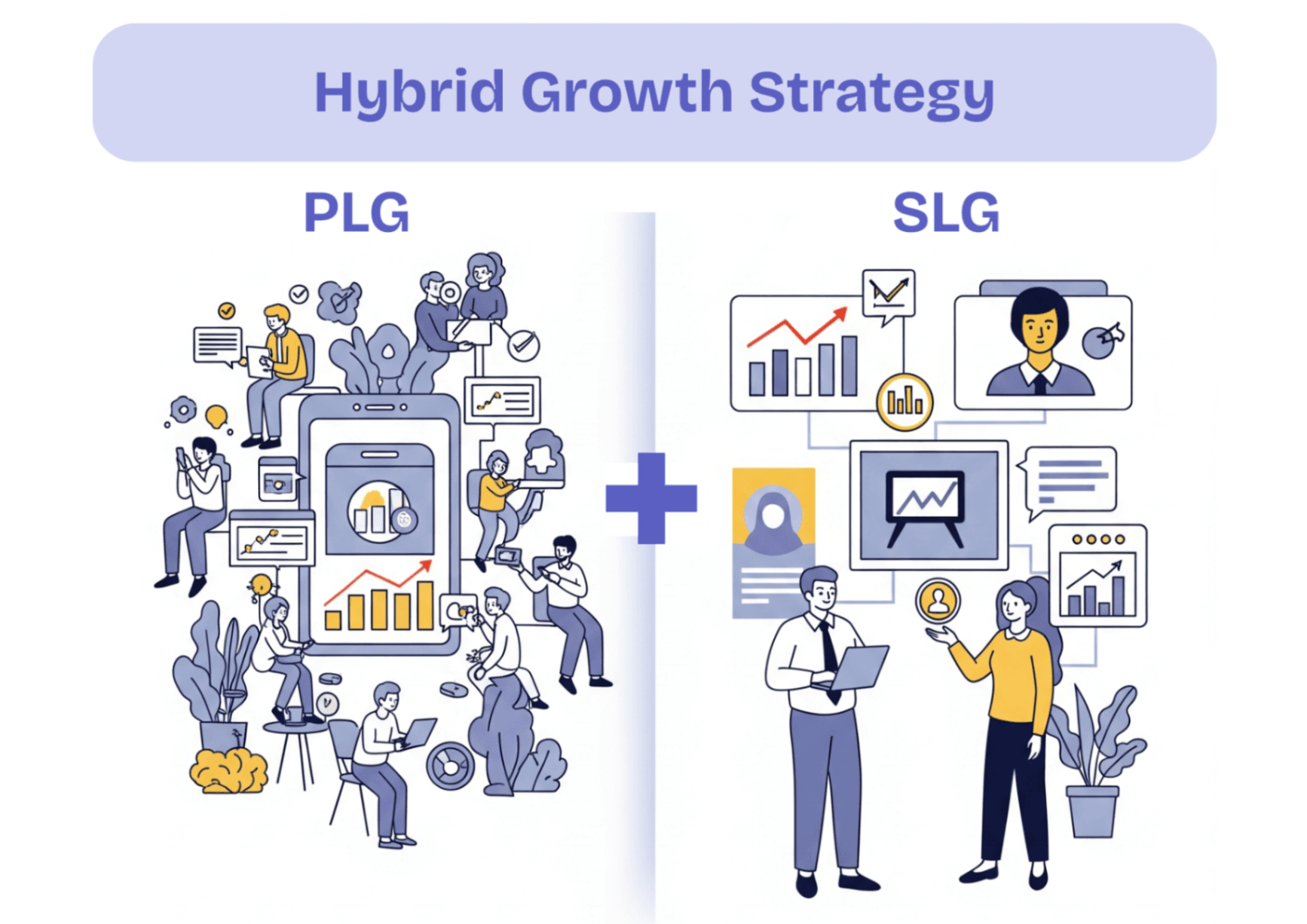
Yes, and some of the most successful SaaS companies prove that a hybrid approach can be a growth accelerator.
While the PLG model acts as the primary driver of customer acquisition by showcasing the product’s value through hands-on experiences, SLG steps in to close deals with high-value clients who need more personalized attention.
By combining these strategies, SaaS businesses can attract a large user base through freemium or trial models, then use sales reps to convert qualified leads into paid subscriptions, especially when dealing with enterprise clients.
Here’s why blending PLG and SLG can be a smart move:
Wider market reach through both self-serve users and traditional buyers.
Higher customer lifetime value by upselling and expanding accounts.
Efficient use of marketing efforts by qualifying leads before sales engagement.
Better alignment between product, marketing, and sales teams.
Faster market share growth by meeting users where they are in the buying journey.
Ready to bridge PLG and SLG? Leverage SmartCue to deliver personalized demos that convert. Start engaging your leads the smart way, today.
Sales vs Product Led Growth: How to Choose the Right Approach for Your Business?
There’s no universal playbook for growth; what works for one SaaS business might completely miss the mark for another. Hence, choosing between the approaches depends on your product, audience, and sales complexity. Let’s understand when each model fits best, so you can align your growth strategy with how your customers actually buy.
When to Choose SLG?
Sales-led growth is ideal when the buying process is more complex and requires personal interaction. If your product involves larger contracts, multiple stakeholders, or technical setup, a sales-driven approach provides the guidance and trust needed to close deals. Choose SLG if:
Your product is complex or has a high price point
Stakeholder alignment and approvals are essential
The sales cycle involves legal, compliance, or procurement steps
When to Choose PLG?
The product-led growth model works best when your product can sell itself fast. If your users can easily grasp the value of your product without much handholding, PLG can help you scale efficiently and lower acquisition costs. Choose PLG if:
Your product has a simple, intuitive user experience
Users can see immediate value after signing up
Your audience prefers to explore and learn on their own
You aim to reduce CAC and grow through organic adoption
Still not sure which model fits your business? Maybe you don’t check all the boxes for PLG or SLG, and that’s okay. That’s where a hybrid approach can offer the best of both worlds.
When a Hybrid Model Makes Sense?
A hybrid growth model works best when your business serves both self-serve users and high-touch clients. If your product delivers value quickly but also requires personalized onboarding or sales support for certain segments, combining PLG and SLG helps you scale without losing depth. Choose a hybrid model if:
You cater to both individual users and enterprise clients
Your product has use cases that vary in complexity
You want to qualify leads through product usage before involving sales
You aim to increase efficiency while still closing high-value deals
Why SmartCue Is the Secret Weapon for Modern GTM Teams?
Whether you're leading with product or closing with sales, SmartCue helps Go-to-Market teams turn more prospects into paying customers faster. It’s built for modern SaaS businesses that need scalable, high-impact demo experiences without the back-and-forth.
Here’s how SmartCue transforms your GTM motion:
Embed personalized, no-code demos directly into blogs, emails, and landing pages.
Track engagement insights to surface product-qualified leads in real time.
Equip sales teams with consistent, on-brand demo narratives that close faster.
Bridge PLG and SLG by aligning product experiences with sales goals.
Start your 14-day free trial today and turn your product into your most powerful sales tool.
Conclusion
Ultimately, selecting between product led vs sales led growth hinges on the unique needs of your business, target market, and growth goals. Each strategy presents distinct advantages that can effectively drive revenue growth and enhance customer engagement.
By understanding the nuances of both approaches, businesses can tailor their growth strategy to optimize the customer journey. Embracing a hybrid model may also provide a powerful strategy, allowing organizations to adapt and thrive in a competitive landscape.
Frequently Asked Questions
How does PLG affect sales team roles?
Product-led growth (PLG) shifts sales team roles from traditional selling to facilitating customer success and engagement. Sales reps focus more on nurturing relationships, understanding user needs, and leveraging product insights, ensuring a seamless customer journey that drives retention and upselling opportunities.
What is the difference between product-led and revenue led?
Product-led growth emphasizes delivering value through the product itself, prioritizing user experience and engagement. In contrast, revenue-led growth focuses on maximizing sales through traditional strategies, often leveraging direct sales teams. Understanding these differences helps businesses align their strategies accordingly.
What is PLG vs PLS?
Product-Led Growth (PLG) uses the product itself as the main driver of customer acquisition and expansion. Product-Led Sales (PLS) combines self-serve product experiences with sales team engagement, focusing on converting high-potential users into larger deals through data signals.
What makes product-led sales different than traditional B2B SaaS sales?
Product-led sales centers on users experiencing the product first, with sales teams stepping in based on usage signals. Traditional B2B SaaS sales rely on upfront demos, pitches, and negotiation before users meaningfully engage with the product.
What role does customer feedback play in both product-led and sales-led growth strategies?
In PLG, customer feedback shapes product improvements and drives retention by enhancing user experience. In SLG, feedback informs sales messaging, negotiation tactics, and post-sale support, helping refine offerings and strengthen client relationships.
Comments
Your comment has been submitted successfully!